INDEX
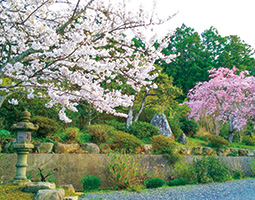
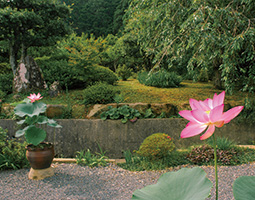
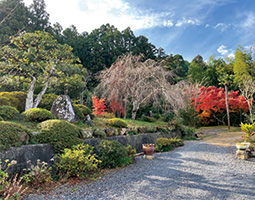
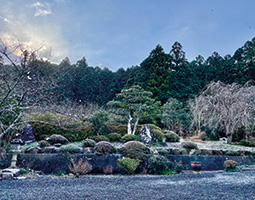
Japanese gardens in each of the four seasons 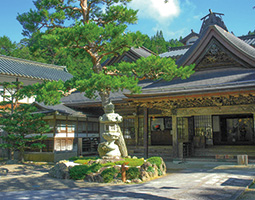
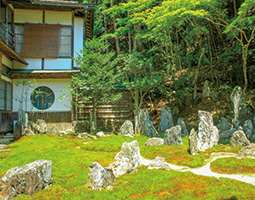
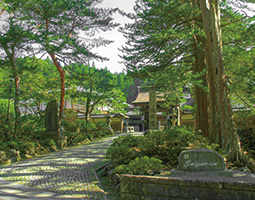
Saizen-in Temple's three gardens were designed by Shigemori Mirei (1896–1975) and were designated as a Registered Monument of Japan in 2010.
April 2021
A German Meister Designing Japanese Gardens

Dominik Schmitz, a German landscape gardener based in Wakayama Prefecture, tends traditional Japanese gardens and designs new gardens drawing on his deep knowledge of Japanese and German landscape gardening techniques.
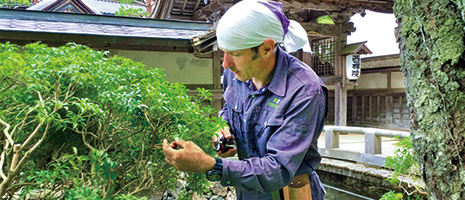
Dominik Schmitz runs Dominik Zoen, a landscape gardening company in Wakayama Prefecture, known for its signature style: traditional Japanese gardens incorporating a German aesthetic.
“A Japanese garden makes it possible for us to enjoy nature with all five of our senses in each of the four seasons. For example, we are able to feel the summer breeze in a garden’s gently moving leaves. Led only by the sound of water, we step further into the garden, and then we discover a cooling little waterfall,” Dominik explains.
His father owned a gardening shop in Sukow-Levitzow (Mecklenburg-Vorpommern), Germany. Inspired by his father, Dominik began his career as a professional gardener in 1995. He came to Japan for the first time in 2003 and trained at Ueji Inc., a famous landscaping company in Kyoto, on the recommendation of an acquaintance. This company has a history of some 250 years and has been responsible for making many famous Japanese-style gardens since the middle of the eighteenth century, such as the park in Heian Jingu Shrine and Maruyama Park. Ogawa Jihei VII (1860–1933), also known as the “seventh Ueji,” is one of the great masters of landscape gardening in Japan’s modern history.




While training at Ueji, Dominik learned a lot about Japanese gardening techniques, such as how gardeners are able to enhance the natural beauty of a garden without making it look artificial by the way they tend the plants and trees. He also learned that Japanese gardeners make gardens by imagining how the plants and trees will grow and what the garden will look like after 50 or 100 years.
Dominik returned to Germany after training at Ueji in Kyoto for one year, and acquired the German national qualification of Meister craftsman in gardening. As he developed his career as a professional gardener and trainer in Berlin, he was reminded of the beauty of Japanese gardens, wishing to further pursue his quest to learn more about Japanese gardens. Soon after that, he married a Japanese woman in Germany and returned to Japan in 2011 to work for Ueji again. He worked as a professional gardener, carrying out management and maintenance work in the traditional Japanese gardens of shrines, temples and historical sites in Kyoto, while striving to upgrade his traditional Japanese gardening techniques.
In 2017, he founded Dominik Zoen, a landscape gardening company in Wakayama Prefecture where his wife’s parents have their house. He chose Wakayama because it is well suited to his gardening business, with its beautiful environment surrounded by the sea and mountains. Features of his work are the use of traditional Japanese gardening techniques for the maintenance of old gardens and the inclusion of German techniques in the design of new gardens.



“We have excellent gardening techniques in both Japan and Germany. I try to achieve a new gardening style while cherishing tradition by combining the gardening techniques of the two countries. I sincerely listen to my customers, which is more important than anything else when I design a private garden. I usually begin my project by listening to their preferences and requests. I would like to create an environment that enables my customers to feel comfortable and happy while they enjoy their gardens in their everyday lives,” says Dominik.
He aims to explore new landscaping frontiers by adopting Japanese traditions coupled with a German aesthetic while accommodating customer preferences. This is how Meister Dominik works as a gardener, understanding the essence of both Japanese and German gardens.

